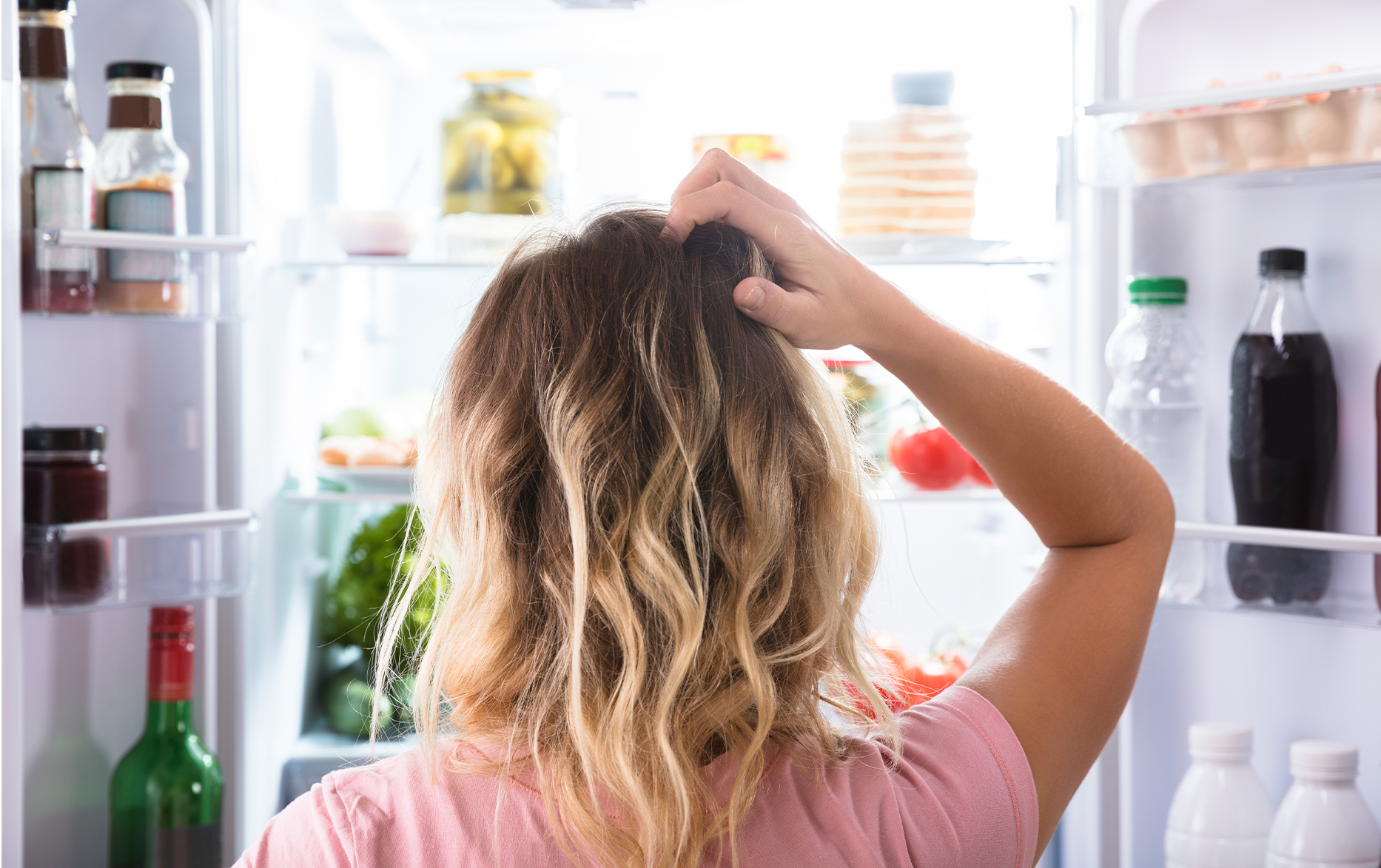HOW TO CLEAN AND DISINFECT A REFRIGERATOR
- Empty spray bottle
- Microfiber cloths or paper towels
Bacteria love warm temperatures, which is why the refrigerator is a modern food storage appliance we all have but might not always be thankful enough for. As long as your refrigerator is set at 40°F or below, your foods will be less likely to become bacterial breeding grounds. This isn't a foolproof method for contamination prevention, however, and your refrigerator should be deep cleaned and disinfected at least once every two weeks to prevent the spread of dangerous bacteria.
According to the CDC, Salmonella is the most common cause of foodborne illnesses in the U.S. Salmonella is easily transferred from raw food to other surfaces by improper handling, as well as contact with kitchen surfaces and equipment.
The critical first step in any disinfection process is to thoroughly clean your surfaces. Cleaning a refrigerator with an all-purpose cleaner removes stubborn stains and soils, which brings any bacteria out of its hiding place. A disinfectant can then be used to eliminate the germs that have been exposed by your cleaning.
Don't forget, all disinfecting products need to stay wet on the surface for a specific length of time to kill bacteria and viruses. This is referred to as "kill time", "dwell time" and/or "contact time" which you can find listed on the label instructions. If it dries before the kill time is met, then you haven't actually disinfected anything.
Wipes are commonly used for disinfecting the inside of a refrigerator because they seem convenient. These often require that surfaces remain wet for up to 10 minutes in order to be effective, and keeping a surface wet with disinfecting wipes can be more difficult than you might think. Many of them contain alcohol, which can cause the liquid to dry quickly, thus not meeting the required kill time.
A fast-acting spray-application disinfectant will allow you to disinfect the hard-to-reach areas that wipes can't, and ensures that the surface remains wet for the proper time so germs are, in fact, killed. An EPA-registered disinfectant can eliminate Salmonella, E. coli, Staph, cold, flu and other illness-causing bacteria in 2 minutes or less, remaining wet and active on surfaces long enough to do its intended job.
Directions for Cleaning and Disinfecting a Refrigerator:
- Empty the fridge. It's a good idea to clean the inside of your refrigerator before you do your weekly grocery shopping so there is the least amount of food in your fridge as possible. Throw out any expired items and wipe off any containers that are prone to leakage or stickiness. Store any meat and dairy products in a cooler with ice while you clean.
- Remove the shelves and drawers. If possible, slide shelves and drawers out. You'll want these to sit and drop to room temperature before cleaning them, especially if they're plastic or glass. You'll be rinsing them with warm water in your sink and immersing cold items in warm or hot water can lead to cracking.
- Mix your Simple Green solution. Mix 3 ounces of Simple Green All-Purpose Cleaner with 4 cups of cold water in an empty spray bottle. Using cold water will help your fridge reach optimum temperature quicker after you've finished cleaning.
- Clean the inside of the doors. Spray your Simple Green from the top of each door to the bottom, following up with a dampened microfiber cloth. Use the same cloth to wipe down the rubber gasket lining the door. Rinse the Simple Green from your water-damp cloth as you go. Use a cotton swab to get to any grooves or tight spaces that you find your cloth can't get into.
- Clean the interior. Spray your Simple Green from top to bottom of each section of the interior compartment. Follow up with your damp cloth.
- Dry thoroughly. Dry each section thoroughly with a dry cloth or paper towels.
- Clean the shelves and drawers. Rinse each piece with warm water in your sink before cleaning to loosen any stuck-on gunk. Spray each shelf or drawer with your Simple Green solution, scrub, and wipe with your damp cloth.
- Dry thoroughly. Dry each piece thoroughly with a dry cloth or paper towels. Put the removable parts back where they belong.
- Monitor the temperature. Wait for the temperature to fall to 41°F before replacing your food items. If your fridge has a fast-cool function, use it to speed up the cooling process.
TIP: Keep an open box of baking soda on the bottom shelf of your fridge to absorb odors between cleanings.
DISINFECTING, DEODORIZING:
- Remove gross filth or heavy soil prior to application of Simple Green Clean Finish Disinfectant Cleaner.
- Apply product with a hand pump trigger sprayer. Hold sprayer six to eight inches from the surface to be treated.
- Spray area until it is covered with the product.
- Allow surface to remain wet for 2 minutes. No scrubbing necessary.
- Allow treated surfaces to air dry or wipe off with clean cloth.

